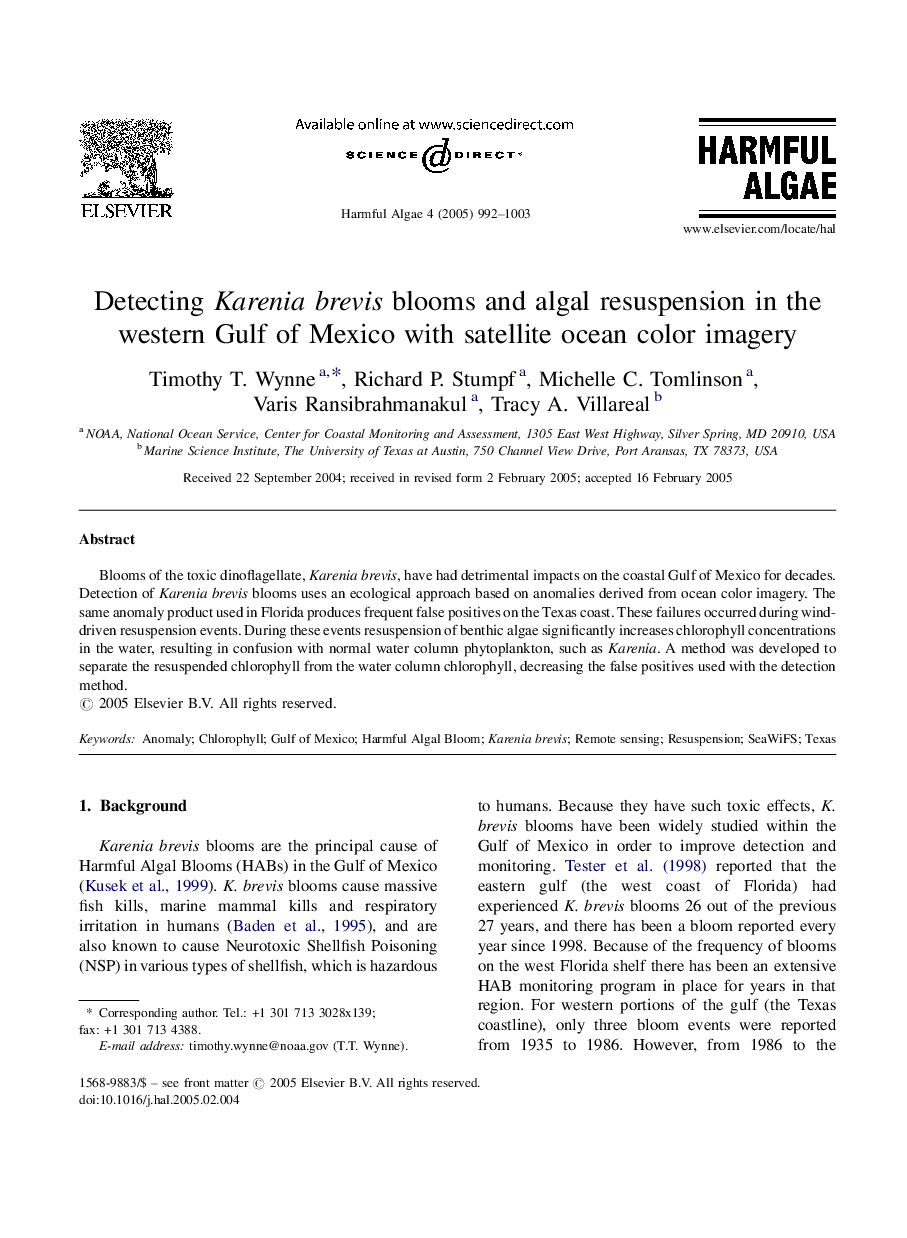| Article ID | Journal | Published Year | Pages | File Type |
|---|---|---|---|---|
| 9482591 | Harmful Algae | 2005 | 12 Pages |
Abstract
Blooms of the toxic dinoflagellate, Karenia brevis, have had detrimental impacts on the coastal Gulf of Mexico for decades. Detection of Karenia brevis blooms uses an ecological approach based on anomalies derived from ocean color imagery. The same anomaly product used in Florida produces frequent false positives on the Texas coast. These failures occurred during wind-driven resuspension events. During these events resuspension of benthic algae significantly increases chlorophyll concentrations in the water, resulting in confusion with normal water column phytoplankton, such as Karenia. A method was developed to separate the resuspended chlorophyll from the water column chlorophyll, decreasing the false positives used with the detection method.
Keywords
Related Topics
Life Sciences
Agricultural and Biological Sciences
Aquatic Science
Authors
Timothy T. Wynne, Richard P. Stumpf, Michelle C. Tomlinson, Varis Ransibrahmanakul, Tracy A. Villareal,
